-
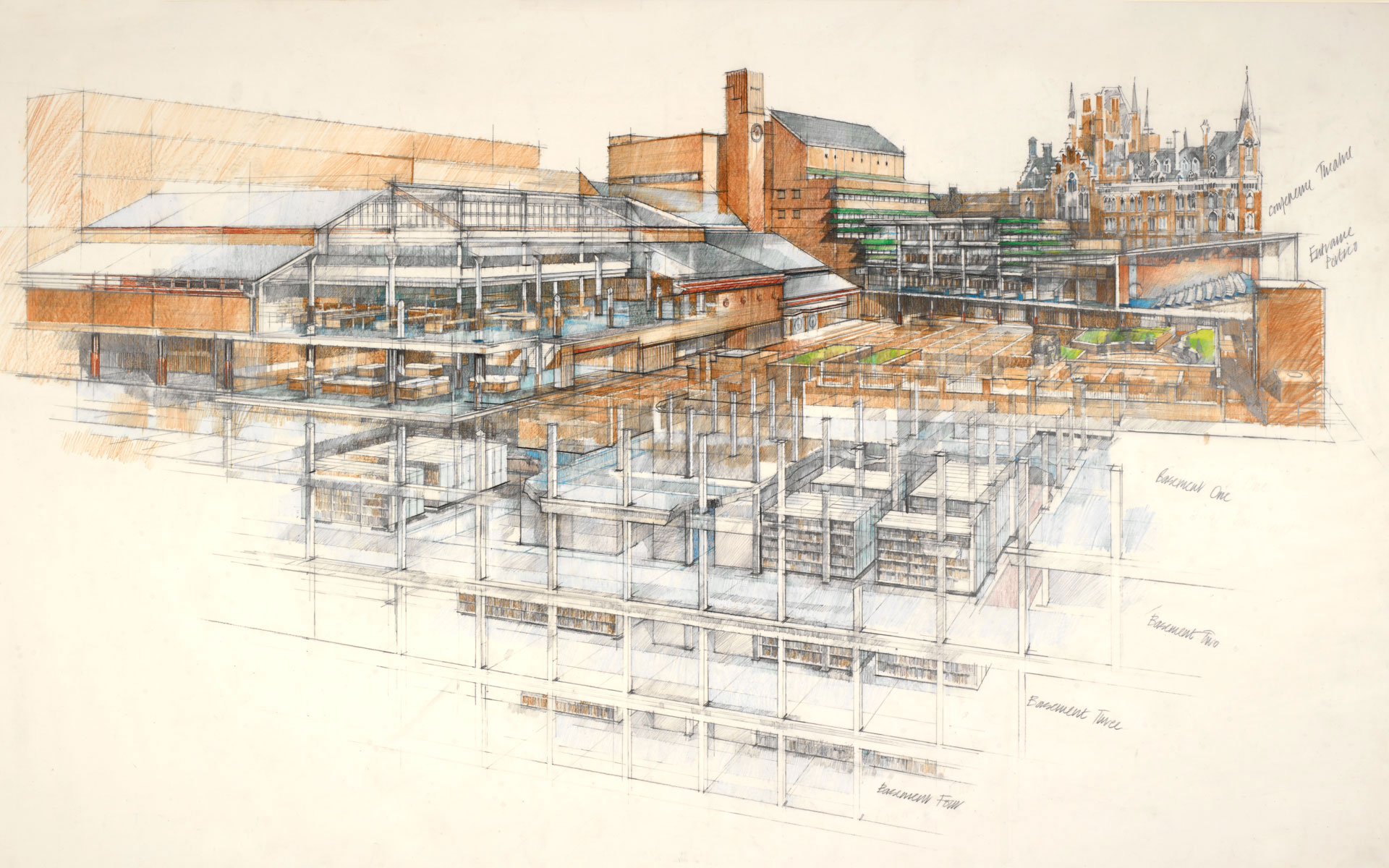

Focus on national libraries
By George Kafka & Fiona Shipwright
-
Previous page: So what does a vast Alvar Aalto-esque brick pile on the Euston Road say about Britishness? Sectional drawing through the British Library from Ossulston Street by its architect Colin St John Wilson, c.1991. (Image courtesy British Library)
National libraries are the central repositories of the books and documents produced over a nation’s history and so, in a sense, repositories of national identity itself. Their architecture therefore has often been seen as needing to reflect that sense of identity.
But how do you build a national library for a new nation? What happens to a library and the information it holds when a nation ceases to exist? And what does nationhood even mean in a world where national borders are superseded by a digital continuum? uncube’s bibliophiles popped out to the library in search of some answers.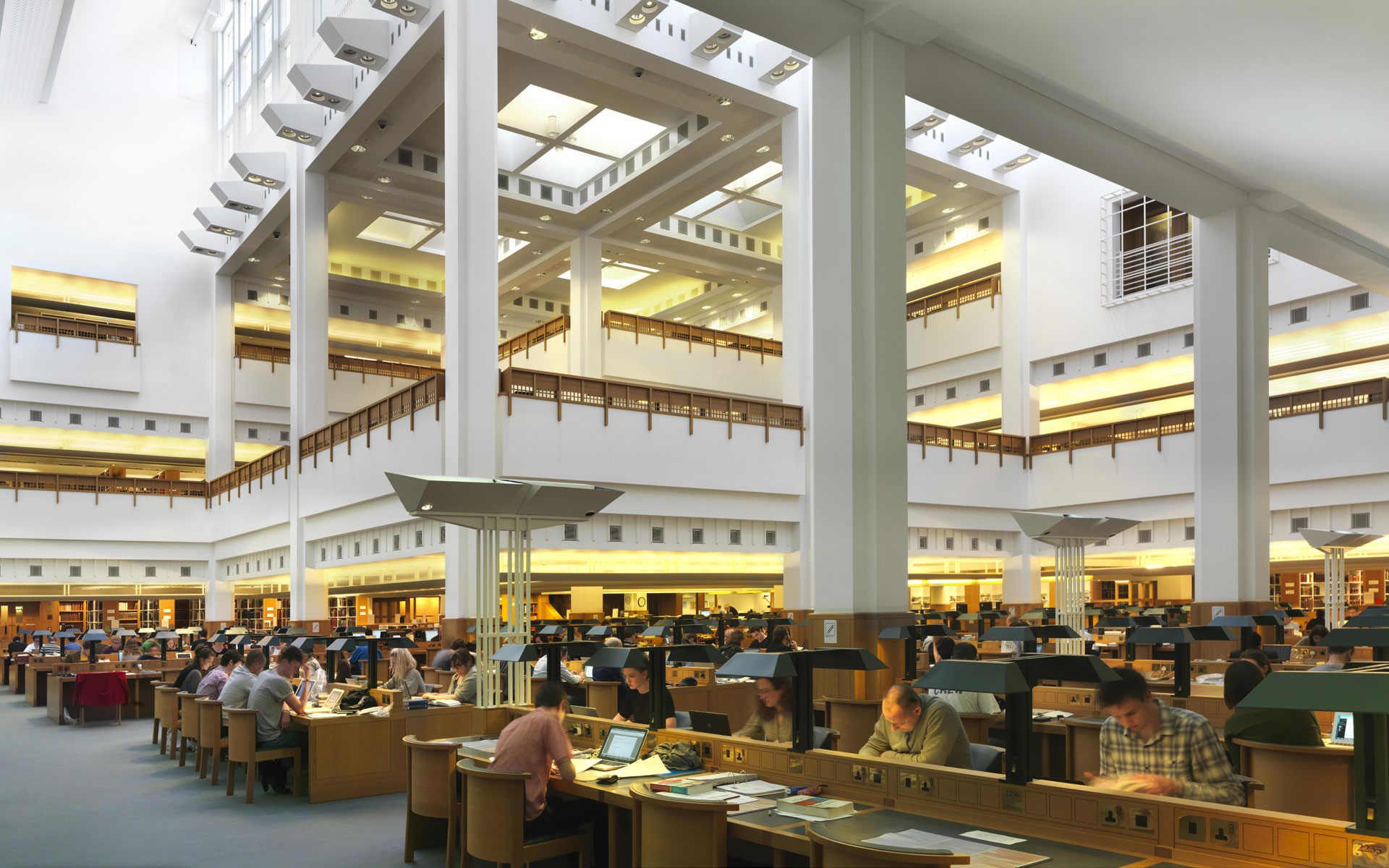 British Library Reading Room (Photo: Paul Grundy)
British Library Reading Room (Photo: Paul Grundy) -
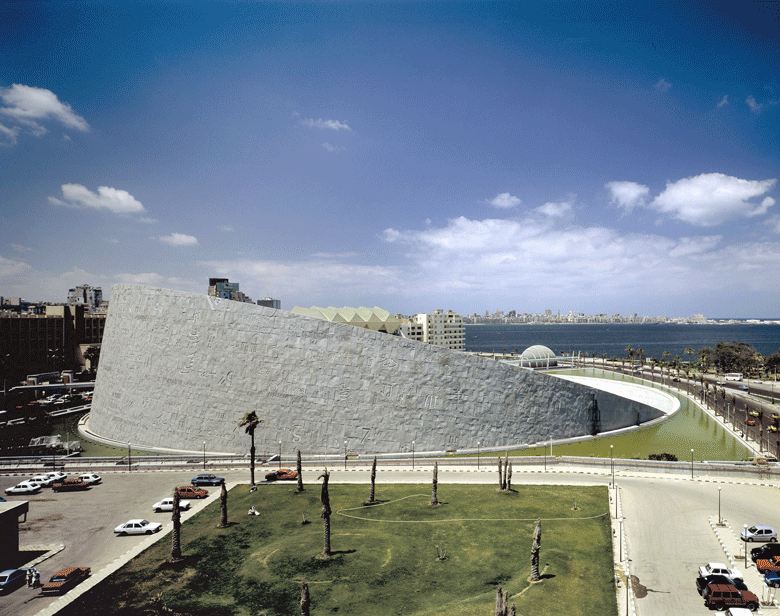
Photos: Gerald Zugmann
Bibliotheca Alexandrina, Alexandria
—
Ptolemy’s Royal Library of Alexandria in Egypt was a built manifestation of the maxim “knowledge is power”. It held papyrus scrolls filled with information gathered from the far corners of the ancient world. But the library with its vast collection of documents was destroyed in a fire in 48 BC, just prior to Egypt’s incorporation into the Roman Empire.
Almost 2,000 years later, Alexandria has once again became home to a showcase library that acts as both a centre for learning and a memorial to its ancient predecessor. Designed by Snøhetta in 1989 and completed in 2001, the Bibliotheca Alexandrina’s disc-like structure appears to rise out of the Mediterranean Sea and is wrapped in hand-carved stone adorned with pictographic script, a tribute to the ancient texts lost in the flames. Among its facilities is the Manuscripts Center, an academic institution that is preserving rare manuscripts in digital form to create an indexed (and fireproof) record of Arab and Islamic heritage. -
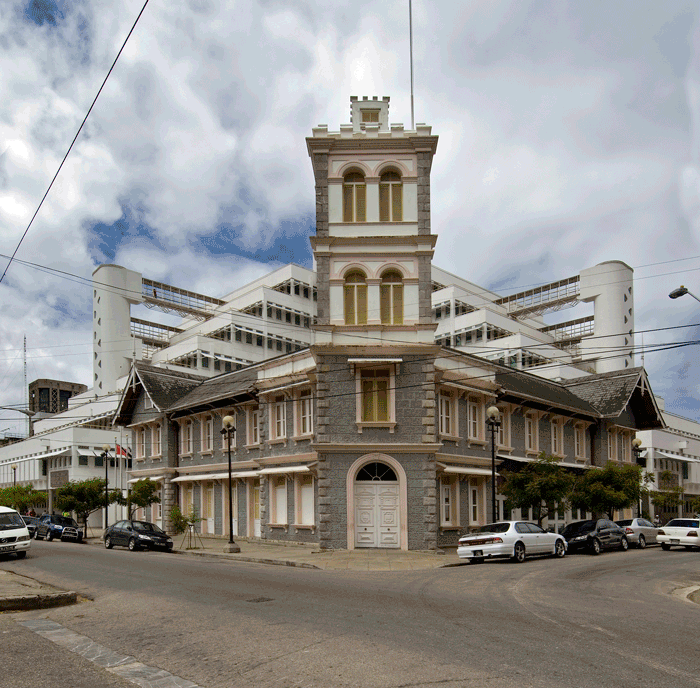 Images courtesy of The Colin Laird Project Ltd.
Images courtesy of The Colin Laird Project Ltd.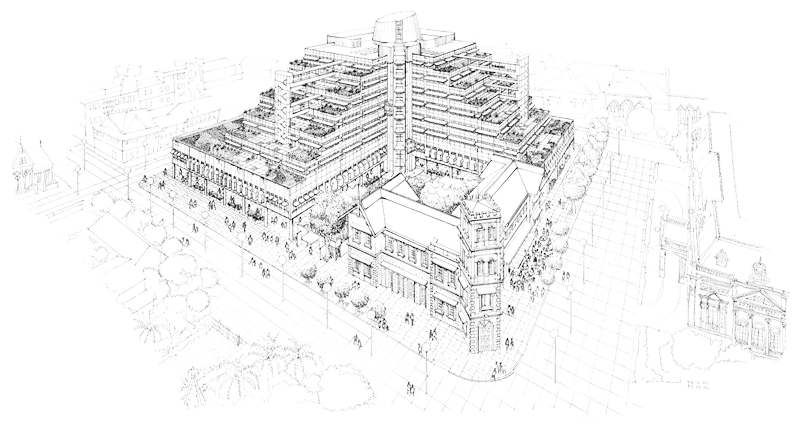
Trinidad & Tobago National Library, Port of Spain
—
Colin Laird’s national library building in Port of Spain, Trinidad, provides a clear example of how this typology can serve as a metaphor for a nation. Although completed in 1999, over thirty years after the country’s independence, this optimistic and inclusive library complex represents the pre- and postcolonial history of the island, incorporating architecture from both sides of this juncture.
Occupying a whole city block, the scheme juxtaposes the colonial – a former fire station – with Laird’s tiered pyramid-like structure. When viewed from street level, the latter appears to rise triumphantly out of the Victorian gables of the former, reflecting Trinidad and Tobago’s own ascendancy out of colonial rule.
The two buildings are also interspersed with public plazas and open walkways, in line with Laird’s civic-minded approach and his critique of the exclusionist, authoritarian nature of typical colonial architecture and urbanism. -
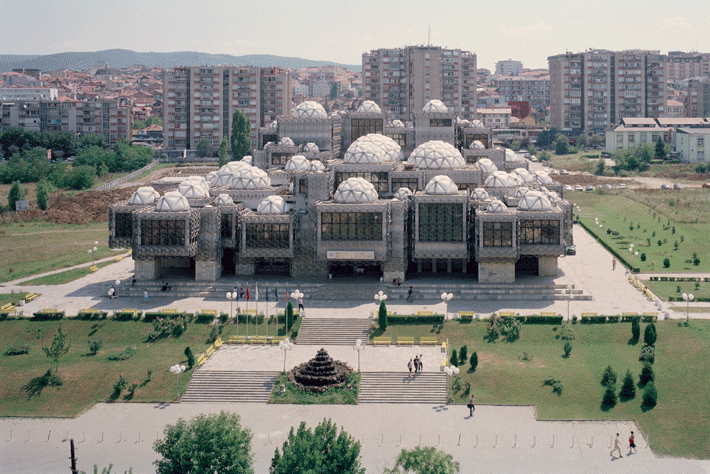
Photos: Wolfgang Thaler
National Library of Kosovo, Pristina
—
The value of inclusivity for a repository of the written word is particularly important in a country where language – and its suppression – has been inextricably woven in struggles for national identity. The National Library of Kosovo has undergone seven name changes since its initial inception 71 years ago as the Regional Library of the Autonome Province of Kosovo, a reflection of the shifting nature of nationhood in the region.
The current building dating from 1982 (last renamed in 2014) was designed by Croatian architect Andrija Mutnjakovic, and remains the present day home of the institution. Its spectacular exterior comprises an array of 99 domes and cubes, looking something like a Balkan take on a Metabolist fantasy. Despite the backdrop of conflict against which the building has stood (in 1999 it was used as a strategic base by Serbian forces), its design actually embodies something of a conciliatory spirit, referencing the vernacular of both Serbian and Albanian traditions, whilst the cube and dome motif is representative of the region’s historical Byzantine and Ottoman roots.
-
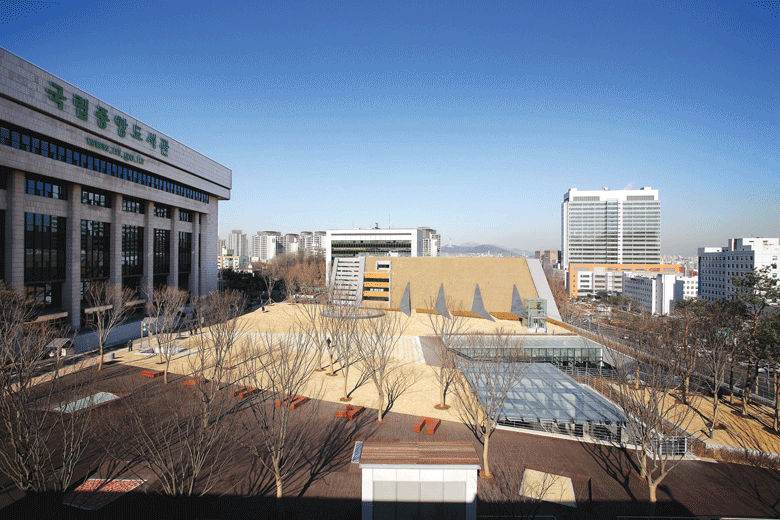
Photo: Seungjun Im
National Digital Library, Seoul
—
If the etymology of the word library (“book room” or “chest”), refers to a very physical way of thinking of book storage then it’s not surprising that a national library concerned with the very non-physical realm of the digital, should invent a new term: welcome to the “dibrary”.
Purposely located directly alongside its more traditional sibling, Seoul’s National Digital Library is intended by the architects to act as a “digital doormat” to the former. Designed and completed in 2009 by German architects Bolles+Wilson and Korean firm Junglim Architects, the building channels a key facet of South Korea’s character, namely its position as a world-leading technological producer and innovator. The national identity associated with it is less tied to the content it stores but rather more concerned with the facilities it offers. I
-
Search
-
FIND PRODUCTS
PRODUCT GROUP
- Building Materials
- Building Panels
- Building technology
- Façade
- Fittings
- Heating, Cooling, Ventilation
- Interior
- Roof
- Sanitary facilities
MANUFACTURER
- 3A Composites
- Alape
- Armstrong
- Caparol
- Eternit
- FSB
- Gira
- Hagemeister
- JUNG
- Kaldewei
- Lamberts
- Leicht
- Solarlux
- Steininger Designers
- Stiebel Eltron
- Velux
- Warema
- Wilkhahn
-
Follow Us
Tumblr
New and existing Tumblr users can connect with uncube and share our visual diary.
»I hate vacations. If you can build buildings, why sit on the beach?«
Philip Johnson
Keyboard Shortcuts
- Supermenu
- Skip Articles
- Turn Pages
- Contents


